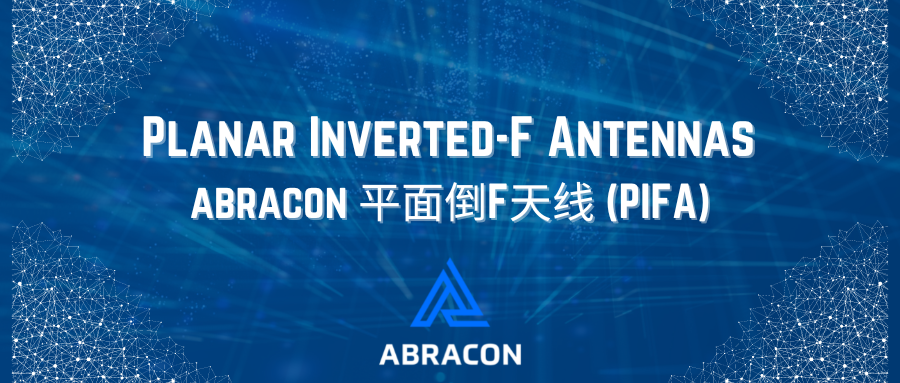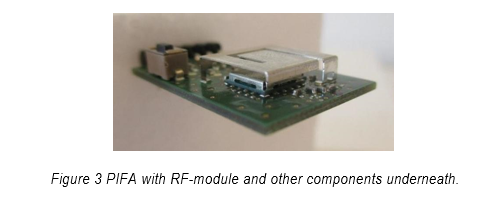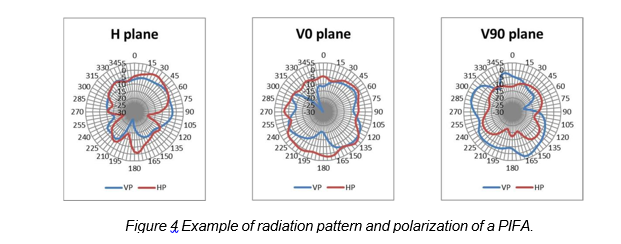

Today, wireless connectivity for all sorts of electronic devices has become increasingly important. As a result, the demand for components used for wireless communication has grown significantly, among them antennas.
This technical note will provide information on one commonly used antenna type, called Planar Inverted-F Antennas (usually abbreviated PIFAs) with the purpose of highlighting pros and cons of PIFAs in different applications.
PIFA technology
The PIFA is a sort of special case of the monopole antenna. It originates from the inverted-F antenna, Figure 1, which is basically a monopole parallel to the PCB, with a short circuit arm implemented. The PIFA is an evolution of this antenna type, with a top plate instead of a single wire, Figure 2.

PIFAs, like patch antennas, are inherently narrow banded. The difference is, with PIFAs the bandwidth can be widened, using different methods, such as slots in the plate and parasitic GND elements. Also, the size of the top plate can be changed by these methods, and thus smaller antennas can be created. Another way of modifying the size of the PIFA itself is by using so-called top loads, although not without consequences. By adding small capacitances to the far end of the antenna lower frequencies can be reached. Doing so will worsen the radiation capabilities, but can be used to achieve the best balance between size and performance for a certain application.
One of the biggest advantages with PIFAs is the limited space required on the electronics board. Since the antenna is positioned above and parallel to the PCB, the only required space is where the mounting pins are positioned. No clearance toward the ground or other metal is needed, which means it is possible to mount components underneath the antenna, on both layers of the PCB, Figure 3.

The reason for the short circuit arm, mentioned above, is to act as impedance matching for the antenna. Since monopoles are naturally capacitive, the antenna can be matched to the desirable impedance (usually 50Ω) with an added inductance, which is what the short circuit arm really is. This means that fewer passive components are needed for impedance matching, and with less parasitic loss in such elements, radiation efficiency is higher.

PIFAs have a moderate to high bandwidth, depending on the application, an omnidirectional radiation pattern and mixed polarization, see Figure 4. A functioning PIFA has a strong connection to the GND plane of the PCB through the short circuit arm, and this, together with the fact that the bandwidth
is quite high, makes this antenna type naturally very robust toward changes in the surrounding environment. Where other antenna types tend to drift in frequency and lose radiation capabilities, i.e. near metal, a PIFA will continue to radiate efficiently.
There are many different applications for antennas, static and moveable devices used for a variety of different communication protocols and frequencies. Depending on what situations a device can be exposed to, the choice of antennas technology can be crucial in achieving a stable wireless connection, and therefore is one of the most important components in any wireless system.
Certain antenna types, e.g. ceramic patch antennas, are typically only good for devices where the radiation direction is constant and always known, such as static wall mounted devices. The PIFA concept, as a very omnidirectional antenna with a lot of mixed polarization, will prove useful in static applications but perhaps particularly with devices that move around a lot, and are used in ever- changing environments, such as wearable and mobile devices.
The fact that this antenna type also stays very stable no matter what the surrounding environment looks like, further adds to the benefits of using it in these types of situations.
Abracon, LLC



深圳市科通技术股份有限公司 consumer hotline:(+86)755-26018083 mail:cs@comtech.cn
隐私政策 | © Copyright 2018 www.comtech.cn | 粤ICP备19161615号 |
![]()